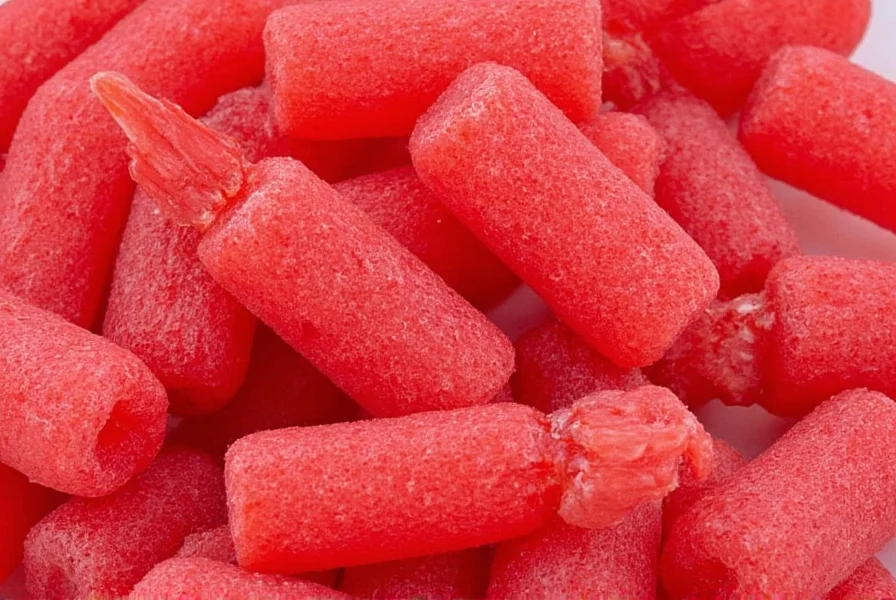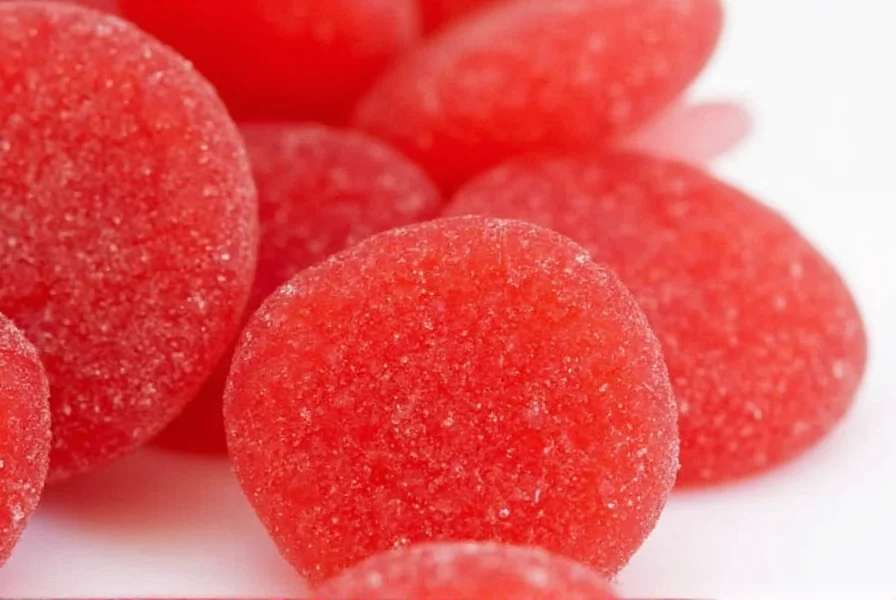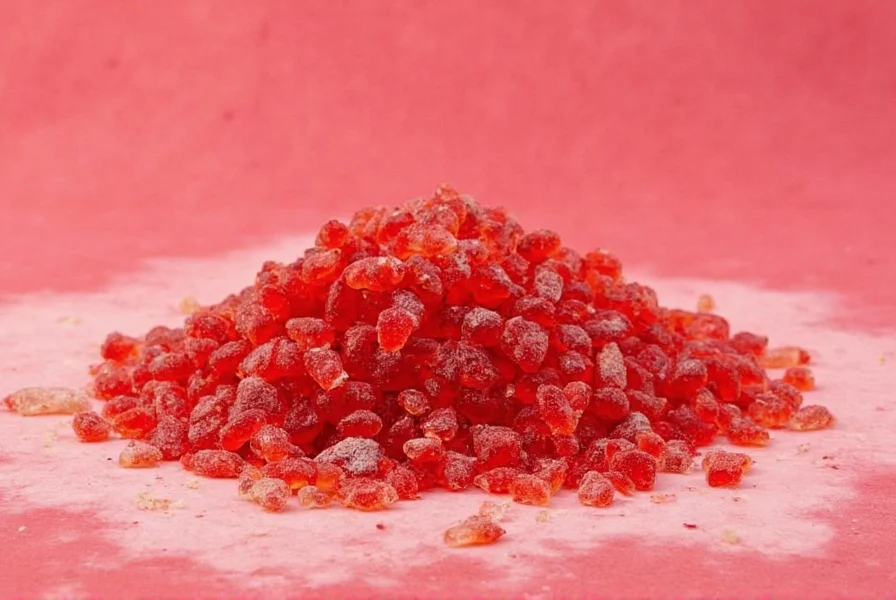For candy enthusiasts curious about this fiery favorite, understanding its composition and appeal goes beyond just the bold flavor. Unlike regular cinnamon candies that often use true cinnamon (Ceylon variety), most red cinnamon candies utilize cassia cinnamon, which contains higher levels of cinnamaldehyde—the compound responsible for both the characteristic flavor and warming sensation. This chemical difference explains why red cinnamon candy creates that distinctive 'burn' that dissipates into sweet warmth.

The Origins of Red Cinnamon Candy
The history of red cinnamon candy traces back to early 20th century America when candy manufacturers began experimenting with intense flavor combinations. The distinctive red color wasn't originally part of the recipe but emerged as a marketing strategy to differentiate these particularly spicy candies from milder alternatives. Early versions appeared in the 1920s, with brands like Red Hots (originally called 'Red Hot Dollars') gaining popularity during the Great Depression as affordable treats.
Unlike European cinnamon candies that typically feature the more delicate Ceylon cinnamon, American red cinnamon candies embraced the bolder cassia variety, which grows abundantly in China and Indonesia. This choice created a more intense sensory experience that became culturally significant, particularly in North America where these candies developed cult followings.
Ingredients and Manufacturing Process
Creating authentic red cinnamon candy requires precise formulation. The base consists of:
| Primary Ingredient | Function | Typical Percentage |
|---|---|---|
| Sucrose (sugar) | Sweetness base and structure | 60-70% |
| Glucose syrup | Prevents crystallization | 20-30% |
| Cassia oil | Primary flavor and heat source | 0.5-1.5% |
| Red #40 dye | Coloration | Trace amounts |
The manufacturing process involves cooking sugar and syrup to the 'hard crack' stage (300-310°F), then adding flavoring and coloring. The mixture is poured onto cooling tables, stretched to incorporate air (which creates the characteristic glossy finish), and shaped while still pliable. Temperature control proves critical—too hot and the cinnamon flavor volatilizes; too cool and the candy becomes brittle.
Regional Variations and Cultural Significance
While red cinnamon candy enjoys global popularity, regional preferences shape its formulation. In Mexico, paletas de canela often incorporate chili powder for extra heat, creating a sweet-spicy balance reflecting local flavor preferences. Scandinavian versions tend to be milder, using true cinnamon rather than cassia. Japanese manufacturers frequently produce smaller, more delicate versions with subtle floral notes.
In American culture, red cinnamon candy has developed unique social rituals. Many schools have banned extremely spicy varieties like Atomic Fireballs due to students challenging each other to eat multiple pieces. The candy's intense flavor profile has also made it popular for sensory experiments and even used in some traditional remedies for sore throats, though scientific evidence supporting these uses remains limited.

Flavor Chemistry and Sensory Experience
The distinctive experience of red cinnamon candy follows a precise physiological sequence. Upon contact, cinnamaldehyde activates TRPA1 receptors responsible for detecting irritants, creating the initial 'burn.' As the candy dissolves, this sensation gradually transforms as sugar content increases, producing the characteristic sweet-heat progression. The red color psychologically enhances perceived intensity—studies show people consistently rate identically flavored candies as spicier when colored red versus white.
This flavor progression explains why many enthusiasts prefer letting the candy dissolve slowly rather than chewing it immediately. The gradual release of cinnamaldehyde creates a longer-lasting experience that evolves from intense heat to sweet warmth, making it distinct from other flavored hard candies.
Health Considerations and Nutritional Profile
From a nutritional perspective, red cinnamon candy functions as a typical hard candy with minimal nutritional value beyond caloric content. A standard serving (about 9 pieces) contains approximately 110 calories, 28g carbohydrates, and negligible protein or fat. The primary health considerations involve:
- Sugar content - Like all hard candies, it contributes to daily sugar intake without nutritional benefits
- Cinnamon compounds - Cassia cinnamon contains coumarin, which in large quantities may affect liver function
- Dental impact - Prolonged exposure to sugar increases cavity risk
While cinnamon itself has demonstrated potential health benefits in studies, the small quantity present in candy makes these effects negligible. The intense flavor does stimulate saliva production, which could theoretically benefit oral health, but this advantage gets offset by the high sugar content.
Frequently Asked Questions
Why is red cinnamon candy so much spicier than other cinnamon-flavored products?
Red cinnamon candy uses cassia cinnamon (rather than true cinnamon) which contains higher concentrations of cinnamaldehyde—the compound responsible for both flavor and heat. The manufacturing process concentrates this compound, and the red color psychologically enhances perceived spiciness through color-flavor association.
Does red cinnamon candy contain actual cinnamon?
Most commercial red cinnamon candies use cassia oil rather than ground cinnamon. Cassia, often labeled as 'cinnamon' in the United States, comes from a different plant species than true cinnamon (Ceylon cinnamon) and contains higher levels of cinnamaldehyde, creating that distinctive intense heat.
Why does the heat from red cinnamon candy last so long?
The slow-dissolving nature of hard candy creates prolonged contact between cinnamaldehyde and oral receptors. As the candy gradually dissolves, it continuously releases this compound, activating TRPA1 receptors responsible for detecting irritants. The sugar matrix acts as a time-release mechanism for the flavor compounds.
Are there any health benefits to eating red cinnamon candy?
While cinnamon itself has demonstrated potential health benefits in research studies, the small quantity present in candy makes these effects negligible. The high sugar content outweighs any potential benefits from the minimal cinnamon compounds. Some people report temporary relief from minor sore throats due to increased saliva production, but this isn't a medically recognized treatment.











 浙公网安备
33010002000092号
浙公网安备
33010002000092号 浙B2-20120091-4
浙B2-20120091-4